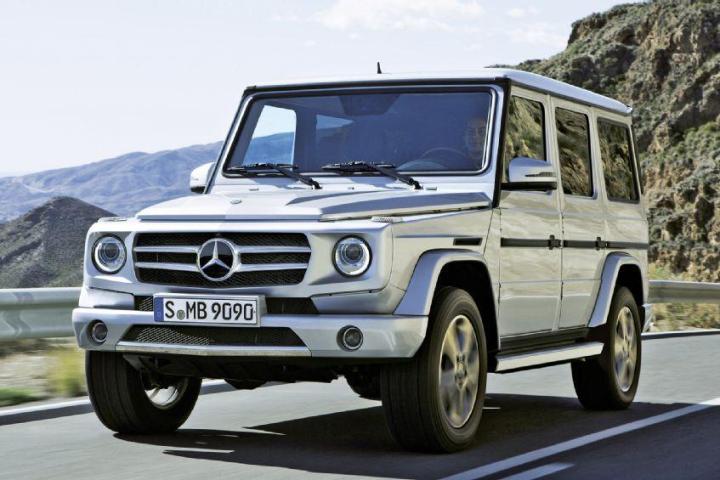
The Mercedes-Benz G-Class has been a classic for military officials, hip-hop stars, and soccer moms alike for decades, but the boxy icon has remained relatively unchanged over its staggering 35-year production life.
Sure, the “G-Wagen” has featured some subtle aesthetic refreshes over the years, like a more angular grill and revised front bumper, but there hasn’t been a major redesign to the crossover SUV since its birth in 1979. Next year, that all changes.
Automobilemag reports that, for 2016, the Geländewagen will be wider by about four inches and will feature a subtly, but not aggressively redesigned body: the bodywork around the windows is slightly smoother, and the front bumper is much more balanced.
Furthermore, the wheel arches are less pronounced (likely due to the wider body), and the front grill is more symmetrical. The roof has also come down a bit to comfortably fit inside civilian garages.
The G-Class will also undergo major changes under the hood. The cheaper G500 will feature Merc’s new twin-turbo, 460-horsepower 4.0-liter V8. For a more … militant approach, there’s the G 63 AMG. The performance G-Class has the 5.5-liter, twin-turbo V8 from the current model, but it makes 570 horsepowers, 34 more than than today’s. More impressive, however, is its fuel economy, which sits at an impressive 20% better than before.
For improved offroad performance, the G-Wagen will feature three locking differentials, and will be much lighter: an all-aluminum frame cuts weight by a remarkable 825 pounds. This increases fuel efficiency significantly, but there are also unconfirmed reports of a plug-in hybrid in the works. Hopefully the gas savings will pay off, because the gas/electric powertrain would come at a $6000 premium.
It is also worth noting that the G-Class sold directly to military officials will remain unchanged, as the new lightweight, aluminum frame is not ideal for areas of combat.
(Rendering via Automobilemag)
Editors' Recommendations
- Mercedes-Benz EQG: range, price, release date, and more
- Mercedes-Benz EQS SUV vs. BMW i7: Ultra-luxury, head-to-head
- How do you crash-test an EV with an 871-pound battery? Mercedes showed us
- Mercedes-AMG EQE SUV first drive review: a better electric SUV
- 2024 Mercedes-AMG S63 E Performance first drive review: high-performance plug-in


